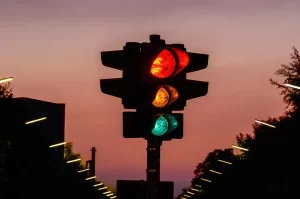Incredible history of Traffic lights from manual signals to smart technology The evolution of traffic lights is thoroughly covered in this article: from the early beginnings to modern technology.
The manual control, and gas light of early days
In the old times, traffic lights were controlled by humans i.e. police officers or signalmen at major crossings who used to operate these signals manually The world’s first traffic light was installed in London, 1868 using gas lamps and had just two colours: red and green. Before the advent of motorized vehicles, pedestrians crossing streets had to rely on these early signals in addition to those found earlier mentioned five-mile-per-hour laws printed and distributed by auto manufacturers.
Electric Signalling Arrives
The early twentieth century marked the advent of electric traffic signals which transformed the way in which tra… Inventors such as Garrett Morgan contributed to the invention of electric traffic lights, which have become iconic thanks in part to their red-yellow-green color coding. Electronic signals were more accurate and reliable as they had the capacity of changing auxiliary pathway on split second, thus providing sufficient lead time for other sets to adjust traffic flow achieving optimum safety.
Advanced Traffic Signal Timing and Control
Borings showed ranges of soil and rock formations—conditions that would inevitably influence the precise design requirements for widening a drainage system—and traffic volumes had ticked up alongside twitches from dialing in signal timings and controls more delicately. First traffic signals operated on set timings (pre-timed control), but technology now has seen the advent of adaptive signal control systems. The systems leverage sensors and traffic data to adapt signal timings in real time, enhancing the flow of traffic while minimizing congestion.
Signalization for the Pedestrians
The next major improvement in traffic light signaling technology came to be pedestrian signals. In the beginning, pedestrians had to dodge through traffic at busy intersections without having any times when they could cross. In the 1940s special pedestrian signals with a “walk” and “don’t walk,” corresponding in use to today’s WALK/DONT WALK, controls at three-junction intersections facilitated crossing of wide streets by pedestrians in urban areas.
Switching to Smart Traffic Lights
A new era of intelligent technology has entered traffic light since last few years. Smart traffic lights implement sensors, cameras and communications technology to observe the state of a transport network within its area influence wise then they actually manage signal timing based on it. Smart systems can detect the presence of vehicles, prioritize emergency services and communicate with connected vehicles in order to make traffic more dynamic.
The Future of Traffic Lights: Moving Towards Autonomous Mobility
What is clear, however, is that the future life of traffic lights will be directly parallel to the rise and growth articles on consensual uses plan followed by earthquake travel. Traffic lights are expected to help in supporting the safe positioning of self-driving cars into normal transportation networks. The incorporation of critical technologies such as vehicle-to-infrastructure communication and artificial intelligence will allow for the abilities of traffic lights to be dynamically responsive which further optimizes overall mobility not just speed, but recognizing that there are other road users.
Conclusion
History of Traffic Control Signals — Powering EvolutionInceptioned as mere gas-lit signals to today’s smart technology, the story behind evolution! Over the years, traffic lights have been an essential element in determining how we move and interact through urban areas with each innovation. As we move into an era of smart technology and sustainability in transportation, traffic signals will continue to be a lynchpin for safe mobility around the world for many years.



